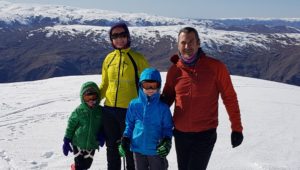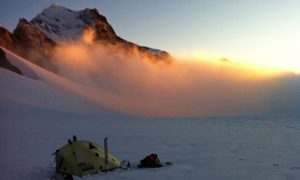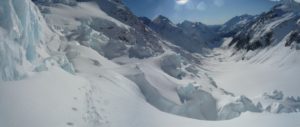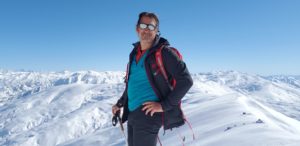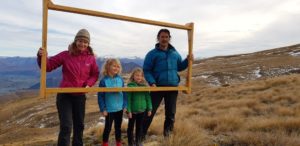Any decent functional club is much more than a single person and in time this club will be running without any of my input. However, because I am kicking this club into life, I thought it worthwhile to explain a bit about myself.
I’m Erik Bradshaw, I live in Arrowtown with two children and an amazingly tolerant wife Christine who patiently accepts and encourages me to pursue the ambitious ideas I dream up such as the Mahu Whenua Traverse.
About 7 years ago I made the first ski traverse the length of the Southern Alps Starting at Nelson Lakes and ending in Fiordland. Over the 850km of that traverse I met less than a dozen people and all of those were when close to civilisation.
I concluded that either I was so smelly people were running away before I came over the horizon or that the NZ mountains are empty in winter. I suspect both those things were true.
Another reason the mountains are empty in winter is that travel is just plain hard work and at the extreme of most people’s ability. To do such a traverse you sleep in a frozen tent most nights and need to carry up to 14 days food (I didn’t have any food drops). Anything that is damp from the day before is frozen in the morning so pulling on frozen clothes becomes commonplace. In other words, it takes a good dose of commitment.
Deciding that I didn’t want to be perpetually friendless in the mountains I concluded there was a need for better, easily transportable accommodation in the mountains. I spent many years thinking through the design problems of mountain huts and how to do it cheaply but struggled to come up with a viable solution.
In 2016 I was lucky enough to go to the Sustainable Summits conference organised by the NZ Alpine Club. Several presenters talked about hut design projects including one about a new hut on Canada’s Wapta traverse and also the NZ Alpine Clubs new Mid Tasman Hut project. I was amazed at how complex and expensive these projects were and concluded there must be a better way.
Having worked with composites quite a lot (carbon fibre, fibreglass, and other reinforced plastics) I concluded they were using the wrong materials and that flat panel construction with all its joins is too problematic in high wind conditions. It struck me that mountain huts have more construction similarities to boat building than conventional construction.
To be continued…
